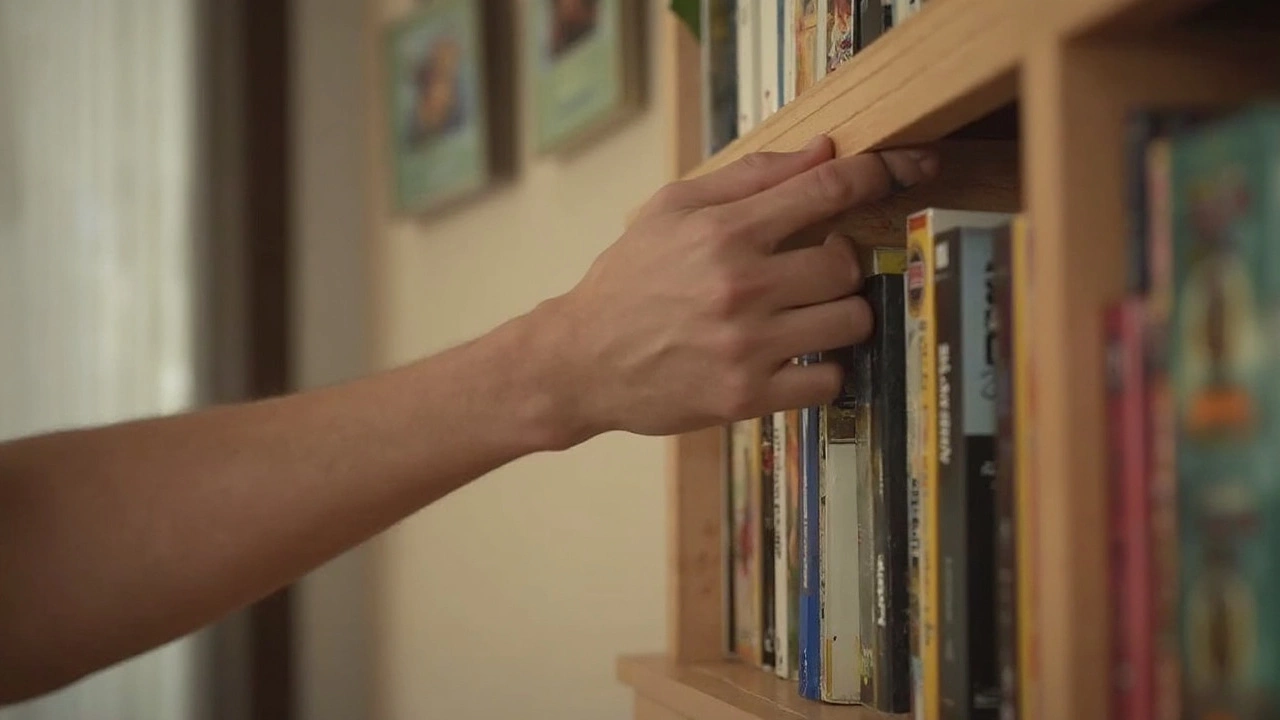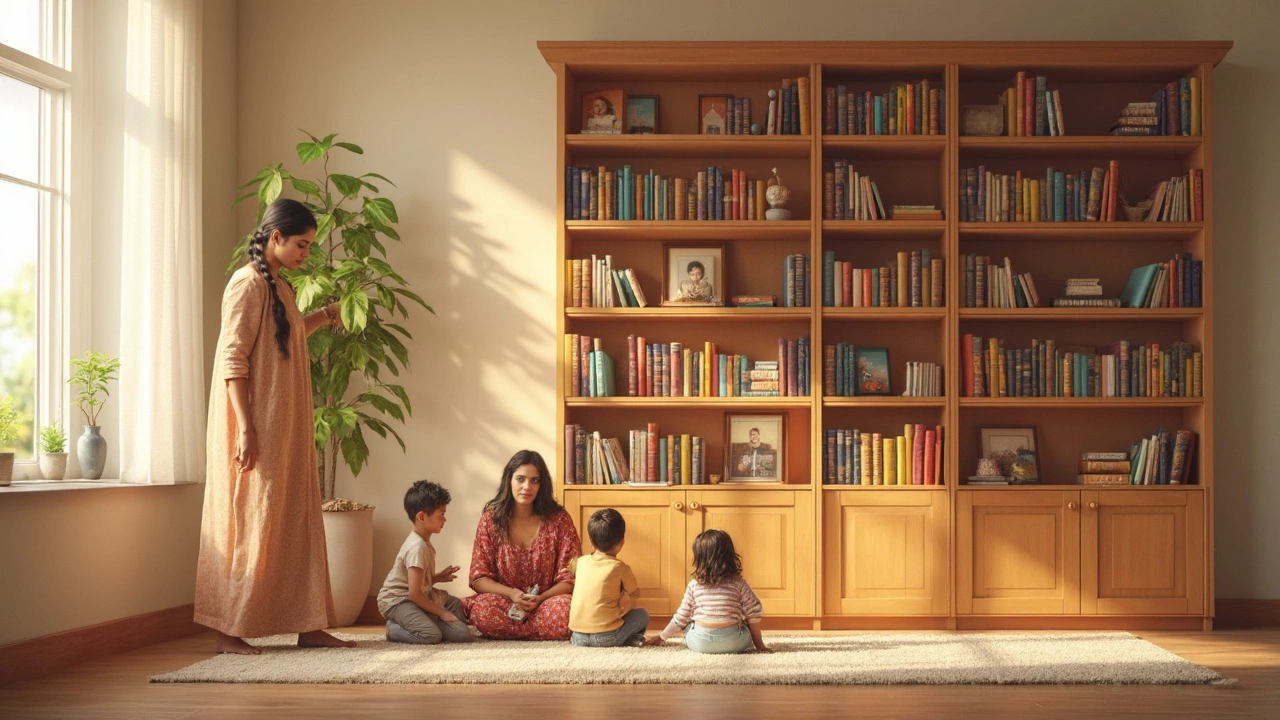Ever seen a bookcase wobble gently when you walk past, or had a kid tug at a shelf to grab a favorite toy? That sinking feeling isn’t just in your imagination—the truth is, untethered bookcases can and do tip over, causing injuries and even fatalities every year. Most people would never guess how often this happens, let alone that there are actually reports as recent as 2024 showing thousands of ER visits because of falling furniture. You might think, "It won’t happen to me," or "My bookcase is sturdy." But the reality is, a simple accident or an energetic pet can turn a heavy, loaded bookshelf into a hazard in seconds.
Why Anchoring Matters: The Hidden Dangers Lurking in Your Living Room
Anchoring a bookcase isn’t just one of those things home safety experts made up to sell you brackets—there’s a real, pressing need for it. Every year in the US, the Consumer Product Safety Commission (CPSC) reports over 15,000 injuries from tip-overs, and bookcases are among the top offenders. In fact, according to their 2023 data, about 27% of furniture tip-over injuries involved shelving or bookcases. That’s not just a scary statistic for parents; pets, the elderly, and even grown adults are at risk. Kids, especially those under age six, are notorious for climbing furniture, and the force required to pull a standard six-foot shelf forward often isn’t much more than a tug at a low-hanging shelf.
Then there’s the myth that "solid wood" or “heavy duty” means safe. Actually, a heavier bookcase equals greater momentum if it tips, so waves of force increase, not decrease, with heft. And the shelves themselves, even empty, are often built with narrow footprints to save space, making them more prone to toppling. Want a surprising fact? A famous test by the Rocky Mountain Research Station found that a loaded bookcase, even 40 inches wide and 70 inches tall, tips with as little as 10-15 pounds of force applied at chest height. Now imagine a toddler or an excited dog racing for a tennis ball.
Earthquakes, too, don’t reserve themselves for the West Coast. Even in places you wouldn’t expect, like Oklahoma or Tennessee, minor tremors are known to send furniture tumbling. If you rent, you might worry about damaging walls, but not anchoring can actually cost you more if injury or damage happens. And if you're the "urban minimalist" with a skinny ladder shelf, think again—the smaller the base, the greater the risk.

When Is Anchoring Necessary? Timing, Placement, and Household Dynamics
Maybe you’re asking, "Do I really need to anchor every bookcase?" Truth is, not all situations demand it, but most do. Let’s look at the practical considerations. First: location. If a bookcase is near a doorway, a path to the kitchen, or any kind of high-traffic area, it's smart to anchor it. Even a brush from a backpack or a slamming door can send things sliding. Second: what’s on your shelves? Heavy textbooks, trophies, big coffee table books—these make the unit top-heavy and bump up the fall risk significantly. Got vinyl records or boxes? They're nearly all stored above waist level, and that matters.
If you have kids, especially under the age of six, anchoring is almost non-negotiable. Little arms can climb faster than you think, and curiosity knows no age. But even teens and adults who routinely slide a hand along the top of the bookshelf—which happens more than we realize—can send it tipping. And don’t forget elderly family members, who might grab a shelf for balance while walking past. It sounds unlikely, but data collected in 2022 by Safe Kids Worldwide linked about 11% of bookcase injuries to seniors using them for stability. Pets play their part, too. Cats love high shelves, and a sudden pounce—or a dog scratching or bumping a unit—can knock things loose.
What if your bookcase is particularly squat? If it’s 36 inches or lower, wide, and fully loaded at the bottom, you might be okay, especially if it’s wedged between other furniture. But most shelves are a lot taller. Freestanding shelving taller than four feet is where problems start, and it’s these that major furniture and insurance companies almost always recommend you anchor. Location matters too. Upstairs units next to railings, basement storage, and anything near windows are all higher risk because of drafts or vibration (think: heavy stereo bass that makes things vibrate). And if you're planning to move or rearrange the room, that’s the best time to anchor.
So, who needs to anchor? Short answer: nearly everyone. Tall, narrow, or loaded shelves in homes with kids, elders, or pets—absolutely. Even in offices or quiet homes, if your unit is 48 inches or taller or sits in a high-traffic area, anchoring is just smart. Don’t wait for a close call.

How to Anchor a Bookcase: Steps, Tools, Smart Alternatives, and Real-World Tips
Ready to actually anchor your bookcase and avoid the horror stories? You don’t need to be a DIY genius or own a full toolbox. Most modern bookcases—even those from IKEA or Wayfair—come with a simple bracket and screw system in the packaging, but if yours didn’t, you can get universal "anti-tip" kits at any hardware store for under $20. These usually include two small L-brackets, screws, and sometimes a strap for flexibility.
Let’s break down the steps for a standard install:
- Empty the bookcase or remove enough items so it’s easy to tip and move. Trust me, bruised toes from falling hardbacks hurt.
- Move the unit close to the wall. Check for floorboards, baseboards, or uneven floors—shims can help for a snug fit.
- Mark a spot on the wall roughly two inches below the top of the unit. This is your bracket’s home base.
- With a stud finder (the best $10 you’ll spend), locate a wall stud for anchoring. If none is within range, use special drywall anchors rated for heavy furniture. Regular screws alone won’t cut it in drywall—they’ll pop right out.
- Secure the bracket to the wall first, then attach the matching bracket to the upper back of the bookcase. Some straps let you loop them around without drilling into your furniture, perfect for antiques or rentals.
- Slide the bookcase back and connect the brackets. Tighten any slack, but don’t overtighten; wood can split.
- If you’re using a strap system, double-check the manufacturer’s weight rating—it should easily surpass your shelf’s load by 50%.
One thing people forget: check brackets every year. Wood warps, drywall shifts, and hardware can loosen. Make it a point to tighten or replace anchors right before the holidays when extra decorations pile on—or after moving house.
Not up for drilling? There are clever workarounds. Heavy-duty furniture straps with adhesive pads stick to most surfaces, though they’re best for units under 40 pounds. Another method for renters: wedge or zip-tie shelves to neighboring furniture for stability, but know that’s not as bulletproof as proper anchoring. And those command strips everyone loves? They’re made for picture frames, not life-sized bookcases. Don’t skimp when safety’s at stake.
Want to reduce risk even further? Distribute your books and heavier objects low—fill the bottom shelf to lower the center of gravity. Angle taller units across corners instead of flat against walls. Use slip-proof pads under shelves on hardwood floors to keep skidding in check. If you have several bookcases, attaching them to each other adds a layer of stability (like linking a bookshelf "train"), but always anchor the combined unit to the wall.
Stuck with an oddly-shaped piece or vintage find? Consult a local handyman—it’s far less expensive than a trip to urgent care. Also, document your anchoring work, especially if you plan on renting out your home or selling it. Buyers and landlords love seeing before-and-after safety steps.
Kids at home? Teach them early not to climb shelves and make it a fun routine to periodically "test" the bookcases together. Small interventions, like using bookends instead of stacking books upright, can keep your household safer.
One last tip: If you’re ever in doubt, imagine what would happen if you leaned your full weight against the bookcase or yanked it from halfway up. If that makes you nervous, it’s definitely time to anchor. Taking a few minutes to properly secure your shelves isn’t just about ticking a box on a checklist. It’s about peace of mind and protecting what matters most. Trust me—no shelf of dusty paperbacks is worth the risk.

